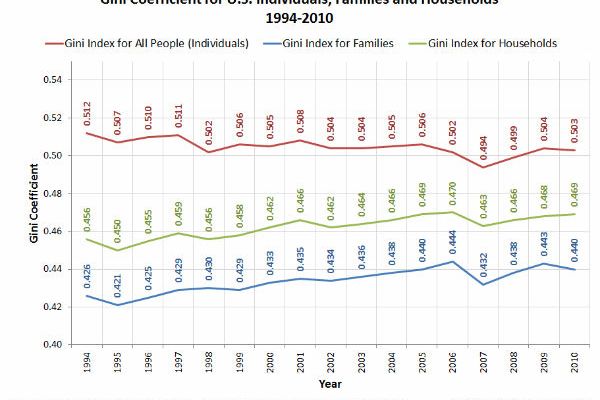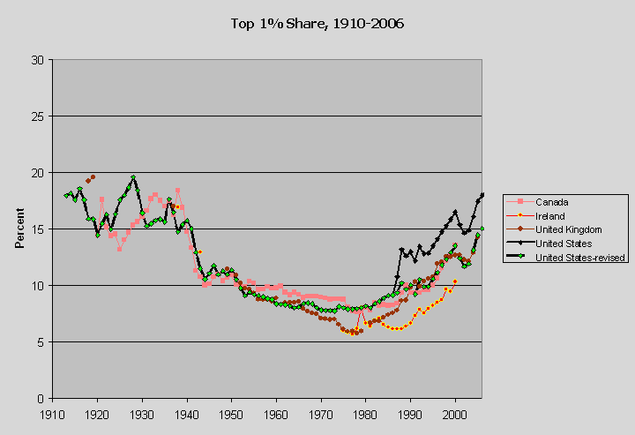There is No Increased Inequality, Unless You Look at the Top 1%
Shikha Dalmia writes that "Greedy Capitalists Hogging Wealth Are Not Causing Income Inequality." In her blog post she cites the lack of significant change in the Gini index of inequality among U.S. individuals in recent years:
I'm a bit confused, because there is another famous graph from Piketty and Saez which suggests that inequality is a real phenomenon. (The graph is all over the place on the web, here's a link from John Schmitt that I found in a quick Google image search):
If you look at the top 1%, or the top 0.1%, you see huge increases in recent years. But maybe this isn't really captured in the Gini coefficient, which averages equally over the entire distribution.
Dalmia's discussion focuses on the difference between inequality trends among individuals, households, and families. Even while the Gini index for individuals has been stable, the indexes for households and families have gone up. As Dalmia points out, this difference can arise if high earners marry each other and if low earners are more likely to live alone.
To me, though, this is all pretty minor compared to the striking patterns in the upper 1% and 0.1%. Assuming we can trust both of the above graphs, Dalmia's point seems oddly consistent with the Occupy Wall Street slogan of the 99% vs. the 1%---it is at the top end where the inequality is concentrated.
In any case, Dalmia's discussion of the distinction between individual, family, and household statistics seems worth making. These points do not, however, particularly support the headline of the article. Nor to they support her claim that "If the left seriously wants to address inequality," they should not focus on higher taxes on the rich.
If you want to oppose higher taxes on the rich, fine. But then you have to accept that inequality is OK. This sort confusion takes away from Dalmia's more serious arguments.



